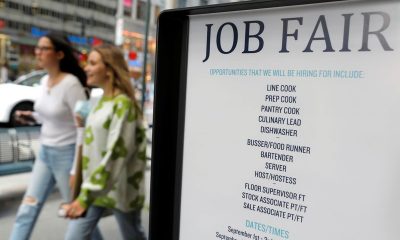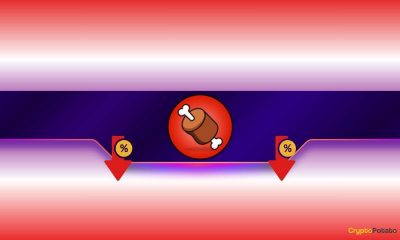Economy
Fed’s Kashkari: 40% chance of needing ‘meaningfully’ higher rates
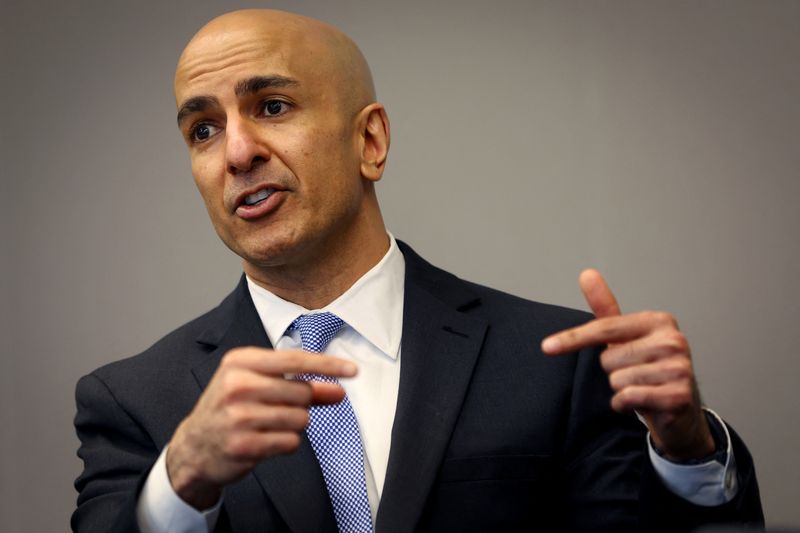
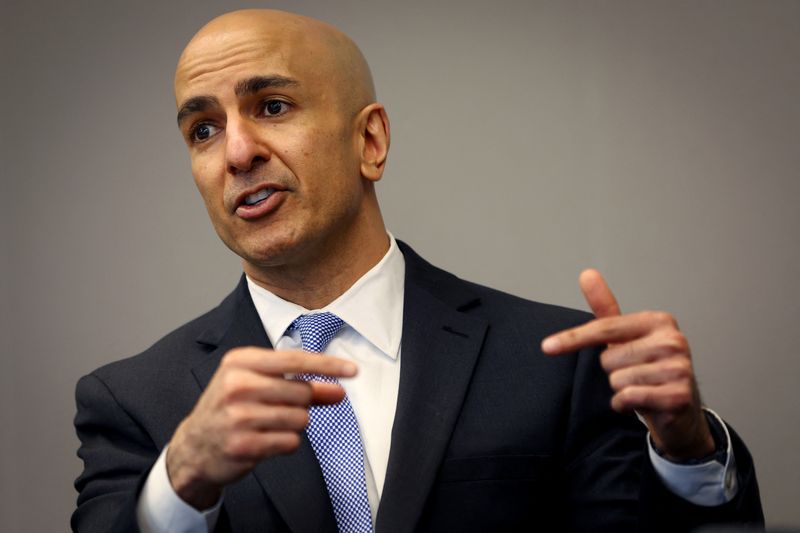
© Reuters. Neel Kashkari, President and CEO of the Federal Reserve Bank of Minneapolis, speaks during an interview with Reuters in New York City, New York, U.S., May 22, 2023. REUTERS/Mike Segar
By Ann Saphir
(Reuters) -A “soft landing” for the U.S. economy is more likely than not, Minneapolis Federal Reserve Bank President Neel Kashkari said on Tuesday, but there is also a 40% chance that the Fed will need to raise interest rates “meaningfully” to beat inflation.
Under the more likely scenario — Kashkari pegged the probability at about 60% — the Fed “potentially” raises rates one more quarter of a percentage point and then holds borrowing costs steady “long enough to bring inflation back to target in a reasonable period of time,” he said in an essay published on the regional Fed bank’s website.
Inflation by the Fed’s preferred measure has dropped from 7% last summer to 3.3% this past July, and U.S. unemployment has only ticked up a bit, reaching 3.8% at last read.
That is substantial progress on inflation and a still-healthy labor market, Kashkari said, and under the more-probable scenario he sees, “the policy tightening we would soon achieve would prove enough to finish the job” and deliver “the proverbial soft landing that we are hoping to achieve.”
But under a still very possible turn of events, Kashkari puts the likelihood at 40% — inflation stays sticky at near 3%, but households feel confident enough about the economy that they continue to spend, keeping upward pressure on prices already elevated by post-pandemic supply constraints.
“Once supply factors have fully recovered, is policy tight enough to complete the job of bringing services inflation back to target?” Kashkari said, playing this less-rosy scenario forward. “It might not be, in which case we would have to push the federal funds rate higher, potentially meaningfully higher.”
The Fed last week held its policy rate steady in a range of 5.25%-5.50%, but most policymakers signaled they believe one more interest-rate hike by the end of the year will likely be appropriate. Kashkari said on Monday he was in that majority.
“The good news is that we don’t need to make this determination right now,” Kashkari said in the essay. “We can observe the actual progress in bringing inflation down over the next several months to determine which scenario is the dominant one.”
The U.S. economy has displayed suprising resilience in recent months, despite 5.25 percentage points of Fed rate hikes over the last 18 months, and Fed policymakers have become increasingly confident they can avoid recession and still get inflation down to their 2% target with only a little more policy tightening.
To do so they see interest rates on a “higher for longer” path than they had just three months ago, with most expecting rates to still be above 5% by the end of next year.
Financial markets are pricing in an even more benign path for rates, giving a no-more-rate-hikes view about a 60% probability, based on pricing of short-term-interest rate futures, and pointing to the Fed policy rate at about 4.64% at the end of 2024.
Economy
Russian central bank says it needs months to make sure CPI falling before rate cuts -RBC
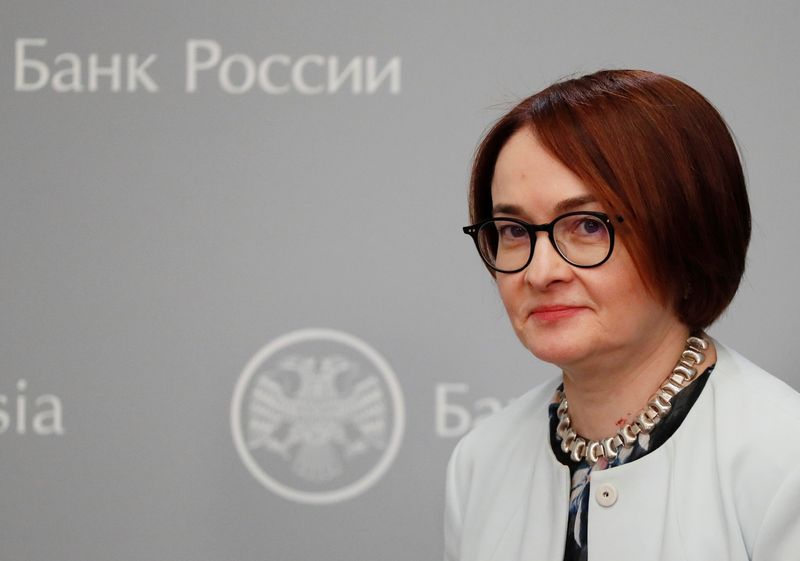
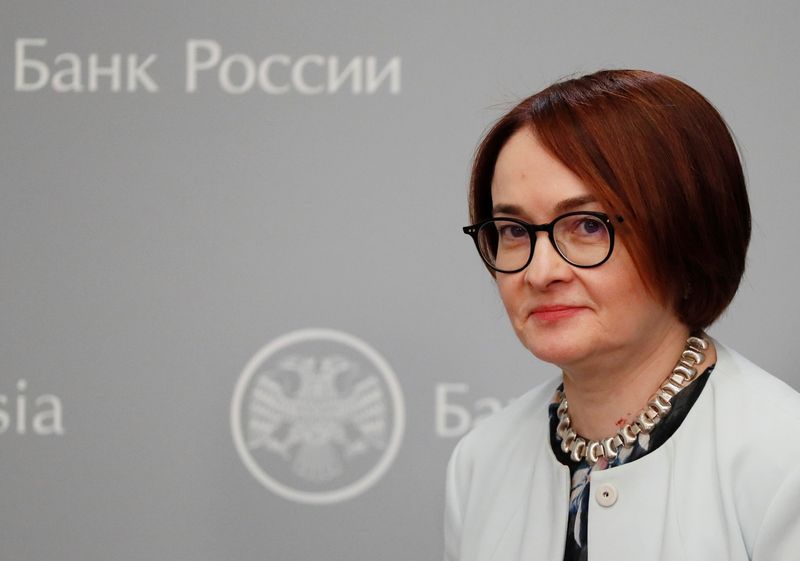
© Reuters. Russian Central Bank Governor Elvira Nabiullina attends a news conference in Moscow, Russia June 14, 2019. REUTERS/Shamil Zhumatov/File Photo
MOSCOW (Reuters) – Russia’s central bank will need two to three months to make sure that inflation is steadily declining before taking any decision on interest rate cuts, the bank’s governor Elvira Nabiullina told RBC media on Sunday.
The central bank raised its key interest rate by 100 basis points to 16% earlier in December, hiking for the fifth consecutive meeting in response to stubborn inflation, and suggested that its tightening cycle was nearly over.
Nabiullina said it was not yet clear when exactly the regulator would start cutting rates, however.
“We really need to make sure that inflation is steadily decreasing, that these are not one-off factors that can affect the rate of price growth in a particular month,” she said.
Nabiullina said the bank was taking into account a wide range of indicators but primarily those that “characterize the stability of inflation”.
“This will take two or three months or more – it depends on how much the wide range of indicators that characterize sustainable inflation declines,” she said.
The bank will next convene to set its benchmark rate on Feb. 16.
The governor also said the bank should have started monetary policy tightening earlier than in July, when it embarked on the rate-hiking cycle.
Economy
China identifies second set of projects in $140 billion spending plan


© Reuters. FILE PHOTO: Workers walk past an under-construction area with completed office towers in the background, in Shenzhen’s Qianhai new district, Guangdong province, China August 25, 2023. REUTERS/David Kirton/File Photo
SHANGHAI (Reuters) – China’s top planning body said on Saturday it had identified a second batch of public investment projects, including flood control and disaster relief programmes, under a bond issuance and investment plan announced in October to boost the economy.
With the latest tranche, China has now earmarked more than 800 billion yuan of its 1 trillion yuan ($140 billion) in additional government bond issuance in the fourth quarter, as it focuses on fiscal steps to shore up the flagging economy.
The National Development and Reform Commission (NDRC) said in a statement on Saturday it had identified 9,600 projects with planned investment of more than 560 billion yuan.
China’s economy, the world’s second largest, is struggling to regain its footing post-COVID-19 as policymakers grapple with tepid consumer demand, weak exports, falling foreign investment and a deepening real estate crisis.
The 1 trillion yuan in additional bond issuance will widen China’s 2023 budget deficit ratio to around 3.8 percent from 3 percent, the state-run Xinhua news agency has said.
“Construction of the projects will improve China’s flood control system, emergency response mechanism and disaster relief capabilities, and better protect people’s lives and property, so it is very significant,” the NDRC said.
The agency said it will coordinate with other government bodies to make sure that funds are allocated speedily for investment and that high standards of quality are maintained in project construction.
($1 = 7.1315 renminbi)
Economy
Russian central bank says it needs months to make sure CPI falling before rate cuts -RBC
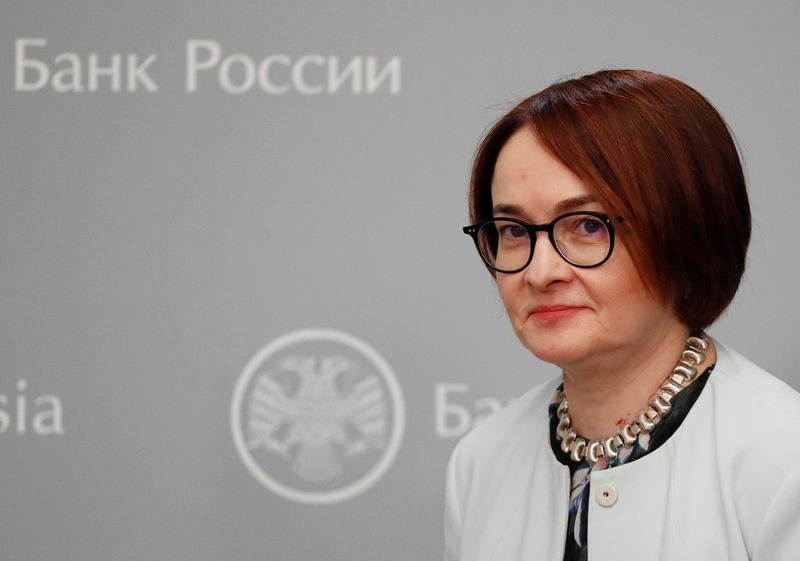

© Reuters. Russian Central Bank Governor Elvira Nabiullina attends a news conference in Moscow, Russia June 14, 2019. REUTERS/Shamil Zhumatov/File Photo
MOSCOW (Reuters) – Russia’s central bank will need two to three months to make sure that inflation is steadily declining before taking any decision on interest rate cuts, the bank’s governor Elvira Nabiullina told RBC media on Sunday.
The central bank raised its key interest rate by 100 basis points to 16% earlier in December, hiking for the fifth consecutive meeting in response to stubborn inflation, and suggested that its tightening cycle was nearly over.
Nabiullina said it was not yet clear when exactly the regulator would start cutting rates, however.
“We really need to make sure that inflation is steadily decreasing, that these are not one-off factors that can affect the rate of price growth in a particular month,” she said.
Nabiullina said the bank was taking into account a wide range of indicators but primarily those that “characterize the stability of inflation”.
“This will take two or three months or more – it depends on how much the wide range of indicators that characterize sustainable inflation declines,” she said.
The bank will next convene to set its benchmark rate on Feb. 16.
The governor also said the bank should have started monetary policy tightening earlier than in July, when it embarked on the rate-hiking cycle.

 Forex3 years ago
Forex3 years agoForex Today: the dollar is gaining strength amid gloomy sentiment at the start of the Fed’s week

 Forex3 years ago
Forex3 years agoUnbiased review of Pocket Option broker

 Forex3 years ago
Forex3 years agoDollar to pound sterling exchange rate today: Pound plummeted to its lowest since 1985

 Forex3 years ago
Forex3 years agoHow is the Australian dollar doing today?

 Cryptocurrency3 years ago
Cryptocurrency3 years agoWhat happened in the crypto market – current events today

 World3 years ago
World3 years agoWhy are modern video games an art form?

 Commodities3 years ago
Commodities3 years agoCopper continues to fall in price on expectations of lower demand in China

 Economy3 years ago
Economy3 years agoCrude oil tankers double in price due to EU anti-Russian sanctions

